Tim Gunn on Making the Cut, dressing for comfort, and the one show he absolutely regrets making
For two decades, Tim Gunn has dominated the fashion industry with his sartorial elegance. His Amazon show Making the Cut continues the trend.

“I’m sure you’ll agree, we are the oddest couple in fashion,” says Tim Gunn, summing up the immutable spark between himself and supermodel-producer Heidi Klum that has kept the Emmy-winning duo at the forefront of fashion reality TV for nearly 20 years. Currently teamed for season two of Amazon’s million-dollar fashion brand competition Making the Cut, on which both serve as executive producers, host-mentor Gunn and host-judge Klum previously had shepherded, or sent packing, sixteen seasons of designers on Project Runway, across two different networks.
But in 2018, when Runway switched from Lifetime back to Bravo, caught in the legal storm around producers The Weinstein Company, Klum and Gunn jumped ship to launch Making the Cut. Debuting in March 2020, the series was a breath of fresh fashion in the midst of a locked-down spring. Now the show returns with a new crop of designers hungry for that million-dollar prize, new judges in supermodel Winnie Harlow and daring designer Jeremy Scott, and, of course, Tim and Heidi, all of whom shot last summer sequestered on a palatial ranch in Malibu.
Unable to jet off to present their creations in Paris and Tokyo, as in season one, this season’s designers still turn out memorable runways, including one show where the models walk on water. And, presiding over it all, whether playfully bantering under a circus tent or genuinely at odds over a tough judging decision, are Gunn and Klum.
“We love and adore each other,” says Gunn. “I think it’s a case of opposites attract in a way, but we have an awful lot in common — a passion for what we do, a deep respect for the people we work with and for each other, and a sincere care for these up-and-coming designers. We want them to succeed.”
Mentoring the competitors towards that success follows in Gunn’s decades spent educating and encouraging students at the Parsons School of Design in Manhattan, first as an instructor, then for seven years as chair of the school’s fashion design department. And throughout an unpredictable career that has led the gay D.C. native from studying architecture to teaching at Parsons, to Project Runway, acting, hosting, and authoring five books, he’s remained, as he says, “in awe” of the young designers he finds in his charge. Making the Cut is no exception.
“I’m not at all disparaging or denigrating Project Runway,” he says. “I love that show and it made me, but the level of talent in Making the Cut is so much higher. And it’s also because we’re looking for so much more in those designers, especially more experience. So I’m constantly in awe all the time. I feel reborn every time I’m in the design studio with them. It’s really nothing short of flabbergasting and jaw-dropping. And when I was teaching, the greatest moment I could possibly have was to witness a student having an epiphany about who they can actually be, who they are becoming. It was the most uplifting, thrilling moment ever. And it’s what kept me in teaching for so long.”
Gunn’s focus on Making the Cut is on uplifting designers who are being challenged to develop what the show calls “the next great global fashion brand,” a tall order for any aspiring artist/business owner. “But if you can start thinking on a broader scale and think globally, it’s a huge advantage,” he says. “And this is why our partnership with Amazon Fashion is so important, and so really critical. Because Amazon Fashion is in 200 countries and territories. They understand the breadth of the market and the individual pockets that need to be addressed specifically.”
That global consumer reach constitutes a huge difference between Making the Cut and Project Runway, which was “a very seminal show, and was forward-thinking,” says Gunn. “It was embracing the fact that the fashion industry in this country was finally coming around to embracing young, entrepreneurial thinking designers.
“But then the industry evolved, as it should, and became much broader in its reach. And the skillset that an up-and-coming fashion designer needs is much broader as well, which is why we have Making the Cut. Because it’s the show that Heidi and Sara Rae — our showrunner for 10 seasons on Runway, but the uber executive producer of Making the Cut — it’s the show we’ve wanted to do for many seasons before we left Runway. And we never dreamed we’d have an Amazon partnership. But it happened, and it’s a dream come true.”

METRO WEEKLY: In your years of shooting all these shows, and your partnership with Heidi going back to 2004, did you do any specific media or on-camera training, or was it all learning on the job?
TIM GUNN: No, I never had any media training. The wonderful thing about this is I just get to be myself. And in season one [of Project Runway], I never dreamed I’d be in the cut of the show. I was very aware of the camera placement and I thought, “As long as they have the designers responding to me, no one needs to see me, no one needs to hear my voice.” And everything that I did with Heidi, they would do again with her as a solo. So I thought, “Okay, they can cut all this out.”
So I won’t say I was relaxed, but I was pretty resigned to the fact that I had a role to play, which was to ask the designers questions. This all happened twenty-four hours before the designers arrived. I was the consultant, I was never intended to be on camera. And the producers came to me and said, “We need someone to go into the workroom and ask the designers what they’re doing. And we think you’re the best person for that because you’ve spent so many years in a classroom with students.”
But I think — I mean, no one’s ever said this, but I’m quite certain — that the cause of that was, they were afraid the designers wouldn’t talk. They would just go into the workroom and do their work, and I think that they were correct. That is true. My students, in my classes, didn’t sit around talking to each other, they were busy working, unless it was a collaborative project.
MW: Your work on reality shows has led to appearing on scripted shows, and doing voice work and acting. What’s that been like for you?
GUNN: Surreal. I have to tell you, though, a funny story about scripted. I always had small parts, so I thought, “I can memorize this. I can wrap my brain around it.” And I found out that was the biggest mistake ever. The first time was Ugly Betty. I was a journalist reporting from a fashion show and they said, “We’ve set up the teleprompter.” And I said, “Well, I don’t need a teleprompter.” And it was awful. I finally said, “Let’s roll the teleprompter. Let’s do that.” And I actually learned how to use a teleprompter pretty well when I was on that absolutely awful ABC daytime show called The Revolution. I hope you’ve never had the ability to see it. It was awful.
MW: I never saw it. No.
GUNN: I can’t even begin to tell you how bad it was. But the silver lining was I learned how to use a teleprompter.
MW: What was The Revolution?
GUNN: It was a lifestyle show. There were five hosts. That’s at least three too many. I was the fashion guy, they had a fitness person, they had a doctor, they had a psychologist. And they had Ty Pennington, I think mainly because they canceled his ABC home makeover show. And this was ABC. So what was really excruciating.
My agent came to the set twice, he’s L.A. based. He said he’s never seen such chaos and disorganization. We would redo entire hour-long shows four, five, six times, for seven-and-a-half, eight months of this. And, get this — we premiered on Martin Luther King Day in January, and we were canceled on February 1st, but no one told us until June. They’re redoing all these episodes, over and over and over and over again, and we’ve been canceled. And when we learned of the cancellation in June, I was the only one of the hosts doing the happy dance all around the set. I said, “Hallelujah!” Because I had a five-year contract, I thought, “I can’t put up with this.”
MW: What aired? Just that month of shows?
GUNN: Oh no, no. We taped for eight months and they aired eight months’ worth. Because we were always a couple of weeks ahead of the actual airing. So the show was on, [but] no one was watching it. And if they were, they were turning it off. I don’t blame them. I never watched the show.
I would see it occasionally on a television in the makeup room. And there was one segment that I remember very, very well with Tiffanie, the psychologist, and Jen, the medical doctor. The two of them and I were walking down three steps to the largest part of the stage. They had us do it a dozen times, switching who was next to whom. It was insane. So when I saw this segment, I saw 30 seconds of it, it happened to be us walking down those steps, and we keep flip-flopping! And it wasn’t intentional. They didn’t intend to do that, but that’s how sloppy and chaotic the whole thing was. Imagine.
MW: I can’t.
GUNN: Sorry. You set me aflame with this memory.
MW: I’m going to have to search out The Revolution on YouTube.
GUNN: I hope it’s not on YouTube. I don’t even know.
MW: On Making the Cut and Project Runway, the judges, and you and Heidi as hosts, often talk about contestants knowing who they are as a designer. “Show us who you are as a designer.” What does that mean for somebody who hasn’t done anything yet?
GUNN: I think the most important questions to ask yourself if you’re in a quandary about that is, “Who is my customer? Who am I designing for? And, if I were in a department store, who would be hanging next to me?” It helps you concretize those issues. But if you don’t know who you are, you’re just going to be at sea. It’s the most important thing in any kind of branding. Who are you?
Heidi is always talking about cutting through the noise. How do you differentiate yourself from everyone else? I’m flabbergasted, quite frankly, in a bad way, by all the proliferation of athleisure wear. Do we need another pair of sweatpants from this person? I mean, it’s ridiculous. I fundamentally don’t understand it. So unless you have something to say that’s new and profound, don’t say it because there’s too much stuff out there already.
MW: There is a lot of noise to sift through, especially on social media. This season, the show is really making the point that the designers’ social media will be pivotal in selling their brand and their products. What’s your take on the role of social media in fashion right now?
GUNN: The role of social media in everything — it’s what is first and foremost in people’s minds. I’ll be honest with you, I get it, I don’t follow any of it. It’s another case of, there’s so much noise. I read about these TikTok stars and I think, “Star? For what reason?” I don’t understand it.
But it’s here with us and it’s not going to go away. So we all need to get on board. We also need to really understand it. And I frankly don’t understand the metrics very well. And I don’t understand the followers very well. Sara Rea [Making the Cut executive producer] and I did some research into buying followers. It’s amazingly inexpensive. Amazingly. You can buy a thousand followers for $50. So if you’re a Kardashian, think of what you could buy with a million dollars. “Oh, suddenly I have a billion followers.” Well, how many of them are actually real? But that’s a whole other matter.
Social media is critically important, but it has to be used thoughtfully and strategically. And what that actually means, I don’t know. I don’t post. I mean, I’m on Instagram and Facebook and Twitter, but I don’t post anything myself. It’s all through my publicist, which means it doesn’t happen very often. These people who are taking photographs of their dinner and posting, I don’t care! I don’t want to share that sort of thing.

MW: Let’s talk about shooting the show. I watched all seven episodes that they’ve sent me, but I haven’t seen the finale. Have you shot the finale, and do you know who won?
GUNN: We shot the finale when we were there. We never left the ranch. So the designers didn’t go home to make a collection, they made it there. And of course I know who won — I was part of the fight. The big discussion. The argument.
MW: The judging for the finale was contentious?
GUNN: Yes, it was. And it’s understandable, in a way, because the judges get very close to the designers, and they have — I don’t want to say a favorite — but they have someone they really truly believe should be the next great fashion brand. I am usually silent during these things. I just figure let them play out the way that they play out. I just so unconditionally believed in [judge] Jeremy Scott’s take on this, that I just declared, “I’m team Jeremy. I’m a thousand-percent with Jeremy. And, Heidi, you need to listen.”
MW: How’d that go over?
GUNN: [Laughs.] Not well. It reminds me of a season of Project Runway when Heidi said to me after I asserted myself into the judging process, “You don’t have a voice. You’re not part of this.”
MW: From my side of the screen, I don’t think I came away with any idea of who Heidi or you favored.
GUNN: I don’t have a favorite till the end. I remain neutral.
MW: I thought the designers got along well together when they needed to, and pitched in and were supportive of each other. Do you feel that the circumstances of shooting quarantine-style affected that camaraderie?
GUNN: Oh, I do. Generally speaking, on Making the Cut — I mean, I have only one other season to reflect upon — they bond well and they really do help each other. There’s sincere camaraderie. And part of it is, they’re unshackled.
On Project Runway, we have this term, “on ice,” which meant that if there wasn’t a camera rolling you didn’t say anything. On Making the Cut, they have the wherewithal to leave the design studio whenever they want. And [on season one] when we were in Paris and Tokyo — Tokyo was a little different because navigating the city was more difficult — but in Paris, if they wanted to go have lunch and have a couple of glasses of wine, go, do it. You’re losing time in the design studio, but you’re free to do that. And there were a lot of social gatherings where the designers would leave the design studio. And in the case of this season, they’d go out onto the patio, the big deck, and just hang. It was lovely.
MW: On the flip side of the camaraderie, there was one designer who sort of stood out. This person in one of their less than finer moments, said, “I don’t want to talk to Tim.” And then you come in and talk to them, and their body language is totally negative. They’re not engaged or listening. And then you say to them, “Your body language is giving me loser.” That person might be able to look back and say, “Well, I was tired, stressed,” or “It was the editing.” What was going on there? Was it the editing?
GUNN: It’s not editing at all. It hasn’t happened on Making the Cut, but it certainly happened on Runway, where people would say, “That’s not what happened, that was the editing.” Well, your mouth’s moving, and there are words coming out. And you did this, whatever it may be.
In the case of [this designer], I don’t expect much from — well, that’s not true, I expect a huge amount. I go back to my students. I would say to them the first day of class, “My expectations of you are that you will show up and you will shine.” And by the end of the semester I’d say, “Just show up. I don’t care about the shine.” But with [this designer], here we are, I don’t have to engage with you, but I’d like to. And if you don’t want to have a conversation, we don’t have to have a conversation, but I believe you will benefit from some professional engagement here. It’s not a peer, it’s someone who isn’t competing with you, it’s someone who’s neutral, but wants to help you. And they couldn’t even stand up straight. They were leaning over the table, “I’m so tired.” Stand up! Have an erect posture. It’s the least one can expect. But they were always tired, always telling the judges they were tired.

But you don’t know how people are actually going to behave, and it is a stressful environment. There’s no excuse for sleep deprivation, except they could blame themselves because we don’t do that. We don’t burn the midnight oil. We put them into their rooms and they each have a private hotel room. There’s no sharing, so you use the time however you want to use it.
[As for] the editing, I have to say that the integrity is why I have stuck with the show — both shows. The integrity and the seriousness of purpose is extraordinary. [Our show is] very unusual in what I’ll call reality television, where things are manufactured and contrived, usually for the sake of drama. We hate drama, because the designers don’t do their best work. And that’s what both shows are all about, how great can this work be? A stressful environment does not bode well for good work.
MW: But TV producers like drama. So you’ve got cross purposes there.
GUNN: Our producers don’t. We’re there to prop up the designers to help them and to get the best possible work. We have a million dollars at stake. We have an Amazon Fashion mentorship. We have a collection that’s going in the Making the Cut store. The stakes are high. So to throw in drama doesn’t really advance the plot. And when we would have it on Runway, I saw one of my roles as being the person who needed to help extinguish it, just get rid of it because of the stress levels.
If we think a designer’s motivated to be on Making the Cut because they’re a drama queen, out, out. And if we sniff that out — it hasn’t happened on Making the Cut, but it would happen on Runway — in the first design challenge, then they’re gone. We find a way to get rid of them because it’s just not useful. People like that just don’t advance the plot. It’s negative energy.
MW: Have you ever looked back at a scene or a moment, and said, “Actually, it was the editing and that was not an accurate representation of what I think happened?”
GUNN: The only time I’ve ever experienced it was on Runway, it was during the Bravo days. So it was during one of the first five seasons. It was me. I’m speaking to a designer about something and it was completely placed in the show in a false place. It looks as though I’m talking to X, because that’s how it’s edited, but in fact, that wasn’t the case. I was talking to Y.
I called the executive producer after the show aired. I just said, “J’accuse! I’m very upset about this. This has never happened. And unless you can assure me it will never happen again, I’m not returning to the show.” I have to tell you, my Project Runway years were largely spent threatening to not return over something or other. And it all had to do with integrity and seriousness. So I was assured, “No, I’m really sorry. Bravo wanted this to happen this way.” And I said, “Well, I know, they’re transparent in terms of what they want and they’re constantly interfering.” Heidi used to order the Bravo execs off the set. She would say, “You leave or I am.”
MW: That’s a good use of Heidi Klum power. Let’s talk about your fashion. I love that you have a pocket square for this Zoom conversation. Your suits on the show are, I think, impeccable. The window pane suit, I love that the pattern meets in a perfect V in the back. Who makes your suits?
GUNN: Suitsupply. There’s one in your very city. Suitsupply is a company out of the Netherlands. It was in Europe for about 30 years before it came to the U.S., and New York was its first outpost. And I was that guy shopping at Bergdorf’s and Barney’s and Saks and spending way too much money on clothes, but that’s a whole other story.

And I read a review about Suitsupply in the New York Times, and it sounded too good to be true. And because it said specifically, if you’re that guy who’s shopping at Barney’s and Bergdorf’s and Saks, you should check us out. And I thought, really? And when I did, I was completely blown away. Not only by the quality of the product, but by the visual merchandising. The stores are stunning, absolutely stunning. And every single sales associate is an expert in fit. They all have to apprentice at the mothership in the Netherlands for three months before they’re allowed on the sales floor. So they’re not going to let you just put on a jacket and a pair of pants and walk out. They’re going to tailor it. And they’re going to talk to you about why they’re doing what they do. And in my experience, especially in Washington, D.C., the men are wearing suits that are at least one, and usually two, sizes too big. And we all look our best when things actually fit us.
MW: I don’t imagine that in this past year of lockdown, you were wearing a suit every day. What were you wearing? And where were you spending the pandemic before you got to the ranch in Malibu?
GUNN: New York shut down the third week of March, 2020, and we were all quarantining, basically. We didn’t shoot Making the Cut until the middle of September. So I was homebound. I mean, other than a quick trip to the grocery and liquor stores. But I spent the first week dressing the way that I would dress any other day, thinking, “This is what I should do.” Then I realized it was ridiculous. It was just stupid and kind of petulant of me to be doing that. So I segued into just wearing my pajamas all day, every day.
MW: I have to ask, were they at least silk pajamas? I don’t want to blow anybody’s mind here.
GUNN: [Laughs.] No, plain old cotton or flannel pajamas. Yeah, flannel is a cotton. But I felt like I was living in a sick room, and I thought I’ve got to strike a happy medium. There’s got to be something between the suits, or at least the shirt and ties and jackets, and a pair of pajamas. There has to be. And I have to say, I have grown to have a lot of empathy for the comfort trap. Something that I used to completely disdain. I would say, “You want to dress to feel as though you never got out of bed, don’t.” But I understand it now. Why should you, homebound alone, feel so constrained and tethered? There’s no reason for it. And it’s really not comfortable. But I have been back in a suit a couple of times. And to my huge relief, they fit. I had to tug and pull a bit, but at least I got them on. I was really worried. I thought, “What if nothing fits, I can’t afford a new wardrobe.”
MW: We’ve seen Heidi dressed by designers from Project Runway. Have you been dressed by any of the designers you’ve worked with, or has anyone designed something especially for Tim Gunn?
GUNN: Well, no one’s designed anything specifically for me, but I did buy Jonny Cota’s denim jumpsuit in the Making the Cut store on Amazon. And I actually wore it on the ranch in Malibu. I didn’t wear it on camera, but I wore it. Jonny was paying a visit. I wore it in his honor, and I wore it for Heidi.
MW: Does anyone have a picture of that, or is it just in Heidi’s mind?
GUNN: Probably somebody. I’m certain a crew member does. But I’m too old for it, frankly. It was a denim version of what I wore in Tokyo for our streetwear fashion. That was basically a onesie. And Suitsupply made that for me.
MW: Making the Cut episodes end with, among other title cards, a title card for Tim Gunn Productions, which I think is great to see.
GUNN: Thank you.
MW: Based on reading the interview you did with this magazine in 2007, I feel like Tim Gunn Productions probably is not what you envisioned for your life when you were a kid growing up in D.C.
GUNN: Never.
MW: So, how did it evolve to get to here?
GUNN: Well, my whole life’s been a serendipitous path. I originally intended to be an architect and I studied architecture for a semester, but it was hell on earth. Then I studied literature, then I went back for a second degree in fine arts and sculpture, then I built architectural models for three firms in Washington, which was ironic given that I set out wanting to be an architect and now I’m building their models. And then I was invited to be an assistant to a teacher that I had as an art student, and I loved it because I love her so much. And then she invited me to teach full-time. And I was a wreck, I threw up in the parking lot every day for a week, but I got through it and ended up spending twenty-nine years in a classroom.
And even that evolved because what was added to my plate was the role of an administrator as well. I was associate dean at Parsons and that led to the fashion department because as associate dean I was a kind of Mr. Fix It, or pooper scooper, is what I used to call myself. And the fashion department was having a crisis of leadership and I was sent in ostensibly for a semester to just help right it. And while I was there, I was horrified by what I saw, which was a curriculum that hadn’t changed in fifty years. I mean, the whole idea that there’s no computer technology, the whole idea that there’s no history of the discipline. And the pedagogy in the classroom was such that students weren’t allowed to have a voice, only the faculty could speak. I thought, “This is absolutely so horrifyingly 19th century.”

I scheduled a meeting with the dean and I brought with me a sort of state of the union that was a very lengthy memo just saying, “This place is hemorrhaging and these are the things that need to happen.” And he said, “Well, how do you feel about being the chair?” So I ended up having that role for seven-and-a-half, almost eight years. And I have to say, it’s what I’m proudest of professionally, because changing the curriculum and the pedagogy within that department was absolutely the hardest thing I’ve ever had to do, and the most daunting, and I was reviled by the industry and by the alumni and by the faculty. The students were very supportive because they knew something was wrong. They were my guides through all of this. I pummeled them with questions and asked, “How are you feeling about what you’re doing? And what do you believe you should be doing that you’re not?”
And I would say together, we did it. About ten percent of the faculty were extremely helpful. And after my first two years there, sixty percent of the faculty who had been there initially weren’t there at all. I have to say, proudly, I never had to fire anyone — they would just leave on their own as if to say, “Screw you.” And I thought, “Oh, God bless you for leaving.” And it was in that role, in my chair role, that the producers of Project Runway found me, and the industry went from saying, “He’s a horrible person,” to saying, “Oh my God, look what he did with this program, and look at the huge turnaround the students have had.”
They said a lot of people in the industry had said, “You should talk to Tim Gunn.” And I initially refused the meeting, I said, “Reality television? This industry has enough trouble without that.” But then I Googled them and learned that they were the Project Greenlight producers. So, I knew they had a lot of integrity and a lot of seriousness of purpose, and agreed to the meeting. When I found out that they actually wanted to work with real fashion designers, I was instantly placated. I thought, “Okay, this could be interesting. But they were talking to me about being a consultant, not about being anyone on the show, and that didn’t happen until 24 hours before the designers arrived. And they said, “We think we need someone to go into the work room and ask them what they’re doing.” And I said, “Well, it’s how I’ve spent most of my life, so I’m happy to do it.”
And what you don’t know is that the fact that we shot at Parsons was not by design. We were outfitting a loft space in the Atlas apartment buildings where the designers were living, and we realized we didn’t have any budget, we just didn’t have any money. And I said, “Well, the summer program’s over at the end of July, we’re starting in early August, and we’ll conclude this season before the fall semester begins, so do you want to look at Parsons? We have all the equipment, we have the space.” And that’s actually how it happened.
MW: Serendipity.
GUNN: Yeah, serendipity.
MW: From that educator’s point of view — for young people especially who might worry about their futures or are even afraid about what lies ahead, knowing that what you’re doing at 25 does not have to be what you’ll be doing at 35, 45, or 65 — what’s your advice for embracing the serendipitous path? Because everybody isn’t ready to embrace that.
GUNN: Well, it is true, and I think that’s fear-based largely, fear of the unknown. I think the most important quality anyone can possess is a curious mind because it leads you to myriad places. You see something and it’s a portal that takes you somewhere else, and you’re curious to know more about it.
There can be profound disappointment in young people when they can’t realize the dream that they had. And I’m always saying, “Well, what do you love? What drives your passion? What is it that you’re passionate for?” Because that’s the path you should at least pursue. I find that if you really love something, you’ll make it into something that works for you. But the idea that you’re stuck in a rut is awful. And, actually, that’s a big fashion issue, too — people who are just stuck in a rut and are afraid to make any changes but they know that what they’re doing with their clothes and their accessorizing and even their grooming isn’t maximizing their potential.
So throw the dice. What do you have to lose? You can always retreat. But in my experience, if you have your radar up for opportunities and you see an opportunity and it’s sort of yeasty and you cultivate it, it can grow into something that you couldn’t have realized otherwise. That’s certainly true for me in really basically everything I’ve done as an adult. I would never have predicted any of these particular moments. I mean, I think for Heidi and me winning an Emmy, that was phenomenal. I don’t even know how to describe it. I mean, who knew?
Season two of Making the Cut is streaming on Prime Video, with new episodes available Fridays. Visit www.amazon.com.
Read More:
National Treasure: Arvind Manocha celebrates 50 years of Wolf Trap
Schmigadoon! review: Apple TV’s brilliantly crafted musical satire
Support Metro Weekly’s Journalism
These are challenging times for news organizations. And yet it’s crucial we stay active and provide vital resources and information to both our local readers and the world. So won’t you please take a moment and consider supporting Metro Weekly with a membership? For as little as $5 a month, you can help ensure Metro Weekly magazine and MetroWeekly.com remain free, viable resources as we provide the best, most diverse, culturally-resonant LGBTQ coverage in both the D.C. region and around the world. Memberships come with exclusive perks and discounts, your own personal digital delivery of each week’s magazine (and an archive), access to our Member's Lounge when it launches this fall, and exclusive members-only items like Metro Weekly Membership Mugs and Tote Bags! Check out all our membership levels here and please join us today!








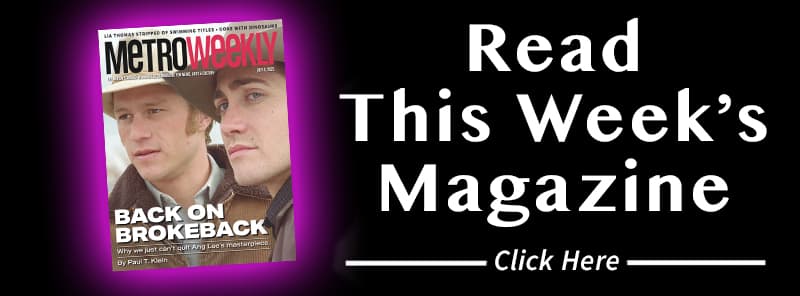

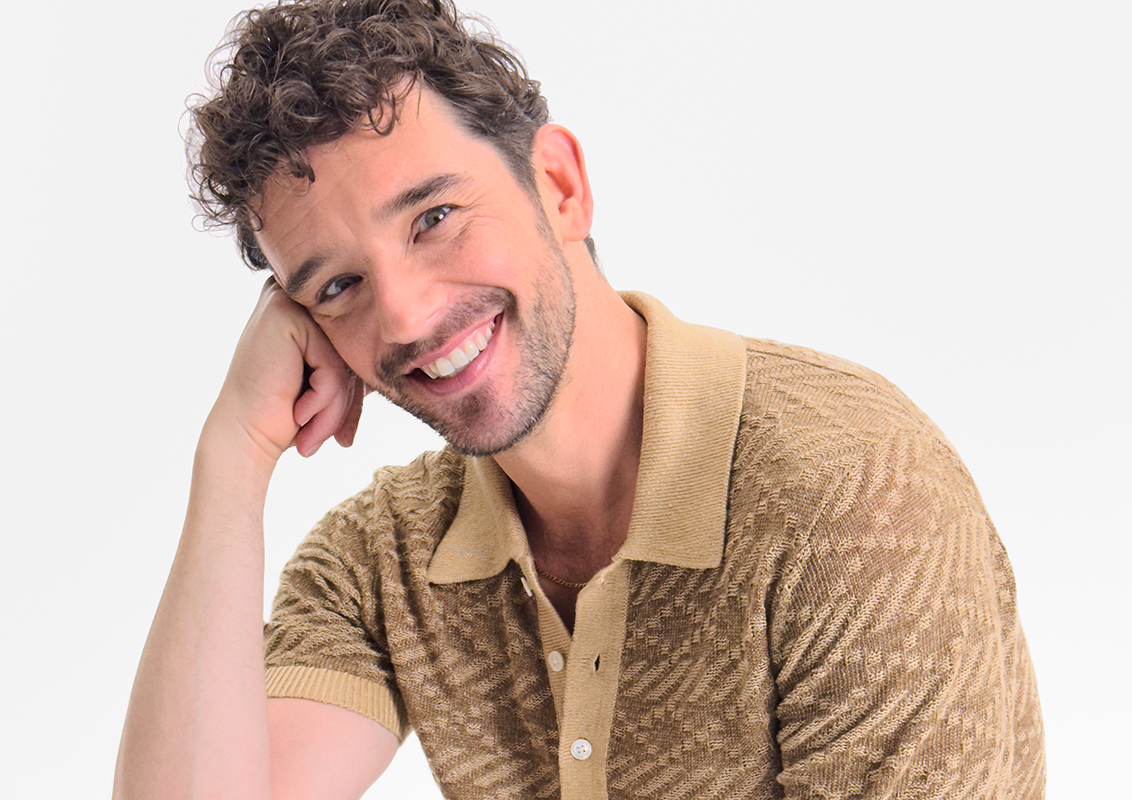
















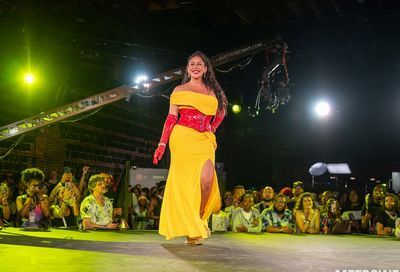
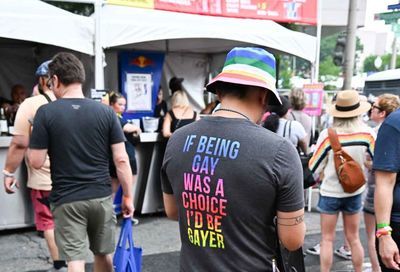
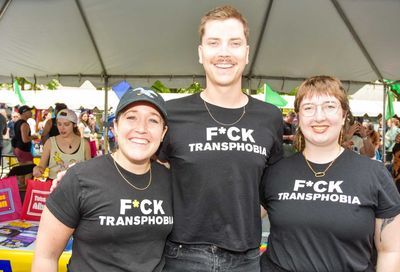
You must be logged in to post a comment.